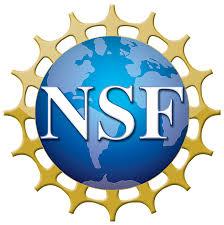IEEE NetRobiCS 2024
The 17th International Workshop on Networked Robotics and Communication Systems (ex WISARN)
Monday, May 20, 2024 ● 08:30 – 18:00 ● Room: Prince of Wales/Oxford
CALL FOR PAPERS COMMITTEE PROGRAM
Robotic networks have emerged as a transformative force with the potential to reshape industries, enhance our daily lives, and venture into the most challenging environments on Earth and beyond. At the heart of this transformation lies the critical aspect of communication and networking, enabling robots to operate effectively, share data and collaborate seamlessly. In this era of interconnected devices, robots rely on advanced communication protocols and networks to function efficiently in diverse environments. Whether in manufacturing, healthcare, autonomous vehicles, or space exploration, the ability of robots to communicate with each other and with humans is transforming industries and pushing the boundaries of technological innovation.
The frontier of research foresees the deployment of highly autonomic and integrated scenarios where heterogeneous ground, aerial and/or marine robots coordinate with each other and with the existing sensing and processing infrastructures to accomplish complex tasks. On the one side, this implies proposing and investigating novel M2M solutions and network protocols to enable the data communication on the aerial and ground segments while taking into account the novel possibilities offered by the emerging technologies (e.g. 5G/6G and LEO satellite communications). On the other side, the data processing on the mobile edges may take advantage of emerging federated and embedded AI techniques to drastically reduce the latency of the decision process while limiting the amount of data transferred from the robotic networks.
This edition of the IEEE NetRobiCS workshop aims at bringing together state-of-the-art contributions on the design, specification, and evaluation of architectures, algorithms, applications, and protocols for current and future applications of wireless ground, marine and aerial robotic networks.
General Chairs:
Prof. Enrico Natalizio, Technology Innovation Institute (TII), UAE
Prof. Yannis Paschalidis, Boston University, USA
Technical Program Chairs:
Prof. Marco Di Felice, University of Bologna, Italy
Prof. Marco Levorato University of California, Irvine, US
Jennifer Simonjan, Technology Innovation Institute (TII), UAE
08:30–09.00
Opening Session
Chairs: Enrico Natalizio, Marco Levorato and Jennifer Simonjan
09:00–10:00
Session 1: Keynote Speech

Prof. Yasamin Mostofi, University of California Santa Barbara, USA
Title: An Overview of Tools and Techniques for Robot-Assisted Connectivity
Bio: Yasamin Mostofi received the B.S. degree in electrical engineering from Sharif University of Technology, and the M.S. and Ph.D. degrees from Stanford University. She is currently a professor in the Department of Electrical and Computer Engineering at the University of California Santa Barbara. Yasamin is the recipient of the Presidential Early Career Award for Scientists and Engineers (PECASE), the Antonio Ruberti Prize from the IEEE Control Systems Society, the National Science Foundation (NSF) CAREER award, and the IEEE Outstanding Engineer Award of Region 6 (more than 10 Western U.S. states), among other awards. She is a fellow of IEEE. She was a semi-plenary speaker at the 2018 IEEE Conference on Decision and Control (CDC) and a keynote speaker at the 2018 Mediterranean Conference on Control and Automation (MED). Yasamin's research is multi-disciplinary, in the two areas of wireless systems and robotics. Current high-level research thrusts include 1) RF sensing for several different applications such as through-wall imaging, occupancy analytics, smart health, and smart spaces; and 2) communication-aware robotics, UAV-assisted connectivity, and joint robotic path planning and communication. Her research has appeared in several reputable news venues such as BBC, Huffington Post, Daily Mail, Engadget, TechCrunch, NSF Science360, ACM News, and IEEE Spectrum, among others. Yasamin has served in many different professional capacities over the years. Recent samples include serving on the Board of Governors of IEEE CSS, serving as a senior editor for IEEE TCNS, and serving as a program co-chair for ACM MobiCom 2022, among others.
Abstract: More than a decade ago, my lab coined the term “communication-aware robotics”, to refer to robotic systems that explicitly take communication issues into account in their path planning and decision making. Since then, this area has flourished tremendously. Today, unmanned vehicles are envisioned to take a critical role in the next-generation cellular systems, or to extend the connectivity of a home wireless network. They are further envisioned to robustly cooperate as a team and maintain the desired connectivity, by actively co-optimizing their corresponding communication and motion objectives. In this talk, I will present an overview of some of our recent work in this area. I will start by presenting a set of mathematical tools that can enable new forms of connectivity using unmanned vehicles. The talk will then add additional sensing constraints to represent cases where the unmanned vehicles are also tasked with a sensing, perception or surveillance task, while having to maintain some form of connectivity. Considering the diverse landscape of possible scenarios and problem formulations related to UV-assisted connectivity, the talk will also discuss the unification of the problem space. Overall, the talk will provide an overview of recent progress in this area, while discussing open problems to motivate future work.
10:00–10:30
Coffee Break
10:30–12:30
Session 2: (Technical Session) Robotic Communication and Computation
Swarm Manager: SDN-Inspired Computation Offloading Management in Heterogeneous Multi-Robot Networks
Matteo Palieri (Field AI, USA); Antonello Longo (Polytechnic University of Bari, Italy); Cataldo Guaragnella (Politecnico di Bari, Italy)
MAD-FELLOWS: a Multi Armed banDit Framework for Energy-efficient, Low-Latency job Offloading in robotic netWorkS
Fabio Busacca, Sergio Palazzo, Raoul Raftopoulos and Giovanni Schembra (University of Catania, Italy)
Network Analysis of Connectivity Optimized Multi-UAV Path Planners
Atefeh Molaei Birgani and Evsen Yanmaz (Ozyegin University, Turkey)
Joint Optimization of Throughput and Energy Consumption in Microservices-Based UAV Networks
José Gómez-delaHiz (University of Extremadura, Spain); Aymen Fakhreddine (Technology Innovation Institute and University of Klagenfurt, Austria); Juan Manuel Murillo Rodriguez and Jaime Galán-Jiménez (University of Extremadura, Spain)
Lyapunov-Optimized 5G-Sliced Communications for Telerobotic Applications
Narges Golmohammadi (University of Louisville, USA); Madan Mohan Rayguru (J B Speed School of Engineering & University of Louisville, USA); Sabur Baidya (University of Louisville, USA)
12:30–14:00
Lunch Break
14:00–15:30
Session 3: (Technical Session) Secure and Privacy-aware Robotic Networks
Privacy Preserving Underwater Collaborative Localization using Time Lock Puzzles
Praveen Jain (Technology Innovation Institute, United Arab Emirates); Pietro Tedeschi (CY4GATE S.p.A., Italy); Jeremy Nicola, Abdelrahaman Aly, Eduardo Soria-Vazquez and Victor Sucasas (Technology Innovation Institute, United Arab Emirates)
Qrkey: Simply and Securely Controlling Swarm Robots
Alexandre Abadie and Mališa Vučinić (Inria, France); Diego Badillo (Universidad Tecnica Federico Santa Maria, Chile); Said Alvarado-Marin, Filip Maksimovic and Thomas Watteyne (Inria, France)
On the Limits of Digital Twins for Safe Deep Reinforcement Learning in Robotic Networks
Mohamed Iheb Balghouthi (SUPCOM University of Carthage, Tunisia); Federico Chiariotti (University of Padova, Italy); Luca Bedogni (University of Modena and Reggio Emilia, Italy)
Detecting Stealthy GPS Spoofing Attack Against UAVs Using Onboard Sensors
Anthony Finn (California State University San Marcos, USA); Mengjie Jia (University of Massachusetts Dartmouth, USA); Yanyan Li (California State University San Marcos, USA); Jiawei Yuan (University of Massachusetts Dartmouth, USA)
15:30–16:00
Coffee Break
16:00–18:00
Session 4: (Technical Session) Swarm Management and Applications
Distributed Autonomous Swarm Formation for Dynamic Network Bridging
Raffaele Galliera (University of West Florida & Institute for Human and Machine Cognition, USA); Thies Möhlenhof (Fraunhofer FKIE, Germany); Alessandro Amato (University of West Florida & Institute for Human & Machine Cognition, USA); Daniel Duran (Institute for Human and Machine Cognition, USA); Kristen Brent Venable (University of West Florida and Institute for Human and Machine Cognition, USA); Niranjan Suri (US Army Research Laboratory (ARL) & Florida Institute for Human & Machine Cognition (IHMC), USA)
Patrolling Heterogeneous Targets with FANETs
Novella Bartolini, Giuseppe Masi and Matteo Prata (Sapienza University of Rome, Italy); Federico Trombetti (Sapienza, University of Rome, Italy)
Task-Oriented Source-Channel Coding Enabled Autonomous Driving Based on Edge Computing
Yufeng Diao, Zhen Meng and Xiangmin Xu (University of Glasgow, United Kingdom (Great Britain)); Changyang She (The University of Sydney, Australia); Philip Guodong Zhao (University of Manchester, United Kingdom (Great Britain))
Optimal route planning of an Unmanned Aerial Vehicle for data collection of agricultural sensors
Christophe Cariou (University of Clermont Auvergne & INRAE, France); Laure Moiroux-Arvis, Fatiha Bendali and Jean Mailfert (University Clermont Auvergne, France)
Hardware Acceleration for Real-Time Wildfire Detection Onboard Drone Networks
Austin Briley and Fatemeh Afghah (Clemson University, USA)







